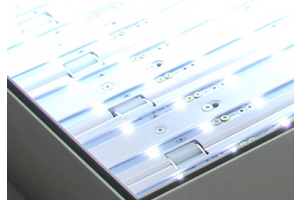How should we use lightboxes in our retail store?
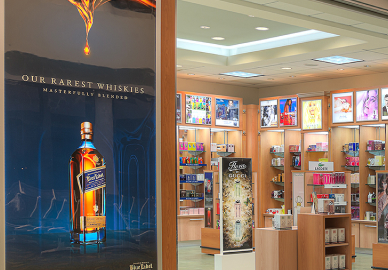
How should we use lightboxes in our retail store?
Most people understand that backlit display lightboxes generally add a whole new, inviting dimension to a retail store’s ambience, but being intentional about how to deploy lightboxes and duratrans backlit graphics while still saving money, will benefit your overall strategy. First let’s remind ourselves of the reasons when and why you’d want to use fluorescent or LED lightboxes instead of non-backlit signs or posters.
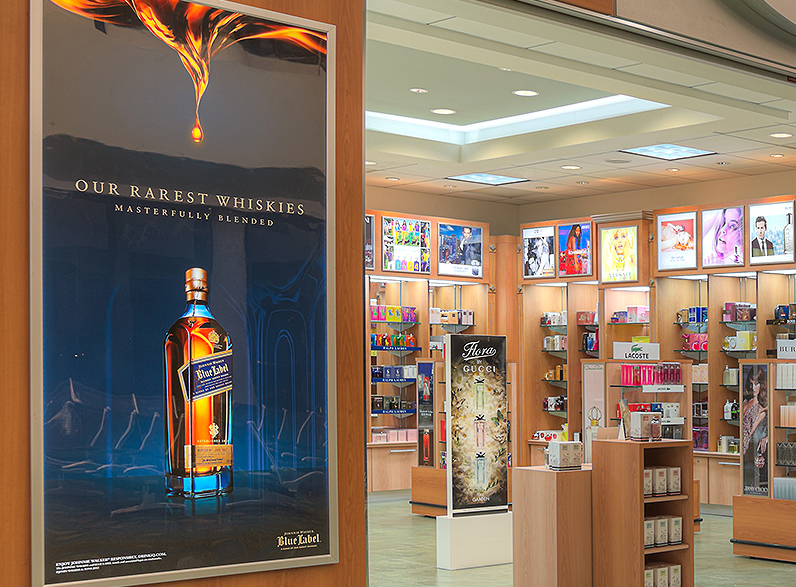
STANDOUT MESSAGING
Lightboxes deliver improved contrast from other visual media in a “noisy” space. For the shopper, there’s quite a contrast between your backlit messages and those that are not backlit, so plan accordingly. Not every message in the store should be in lightboxes; that’s like typing in all capital letters so that now everything is “shouting” instead of just the important messages. Lightboxes tastefully distributed around a shopping space do an amazing job of conveying the important messages that you want your visitors to come away with.
INCREASED PRODUCT ABSORPTION
Also, lightboxes more fully convey the color depth, texture, detail and/or beauty of the product being displayed, because backlighting a photo that’s printed on duratrans backlit film gives you increased color saturation, contrast and perceptible detail. This helps your customers more fully engage the product and appreciate its attributes.
IMPROVED SPACE ILLUMINATION
Thirdly, with backlit lightboxes, you can complement existing space lighting for a brighter, more positive shopper experience. Many retail spaces are beginning to replace standard commercial lighting with lightboxes and backlit graphics, so that they can kill the proverbial two birds. Why not use your space lighting fixtures to also deliver your important company and product messages — or conversely, replace some or all of your space lighting with enough large, bright lightboxes to yield the space illumination level you need? Most quality lightbox fabricators can specify the total light output in lumens for each model and size of lightbox sign you’re considering, whether fluorescent or LED, to help you ensure adequate light levels in your space.
EMOTIONAL CONNECTION
Lastly, professionally-produced backlit photos and graphics in lightboxes elevate your message to “near-real life”, with more realistic/vivid subject lighting than non-backlit messaging. If you’ve ever walked past a jumbo lightbox (in a shopping mall or other retail space) that contained a huge movie poster or a photo of a model wearing the latest cosmetic or fashion accessory, you’ve experienced the unique energy that a large, brightly-backlit photo delivers. This benefit of lightboxes is slightly different than point #2 above, because this is about the emotional trigger that well-planned lightboxes have a unique ability to activate, not just the detailed product information being displayed.
Whether you’re the architect, store designer or retail manager, keeping these four unique strategies for lightboxes in the back of your mind while planning your retail space will help focus your design.
Next, let’s think about what types of content are best suited to lightbox displays, whether indoor or outdoor, and whether small or large. Here’s a chart that gives you a list of “strategies” on one side, and on the other the type of graphic content that best promotes each strategy:
| WHAT WE WANT TO ACCOMPLISH (STRATEGY) |
WHAT WE SHOULD DISPLAY (LIGHTBOX CONTENT) |
|---|---|
| we want to create increased urgency | special promotions, offers that expire |
| our shoppers need more product awareness | closeup or detailed product info —features, textures, color choices, etc. |
| our shoppers need to be educated on the product’s practical application | photos of the product being used by people |
| our audience needs a positive perception of how our product is different or better | photo of the product with labels describing results/benefits of product use |
| our customers just need to know what all we offer | straightforward text menu with pricing and a few photos for clarity and appeal |
The key with the above chart is to select one or maybe at the most two strategies for any given lightbox and the backlit film that you intend to place in it. Trying to leverage a backlit graphic to achieve more than one or two goals usually results in confusion and a missed opportunity for your message to be absorbed. Lastly, consider where in your space you plan to install your new lightboxes.This should be driven by which part of your overall store strategy you intend to boost using the lightboxes. There are generally four main “marketing zones” in a retail space, and each zone experiences a distinct visitor mindset, as well as overall store strategy (and therefore lightbox strategy), as follows:
DRIVE-BY/WALK-BY ZONE
Lightboxes displayed in these areas are best targeted to passersby who are not aware of either your company, or your product, or your unique value — or even if they are aware of all three of those — they’re not aware that you happen to be open for business at this site. The intent of these lightboxes should be to let passersby know one or two of the above points, and to intrigue them. This zone include the building façade, windowline and entry area. Keep in mind that any lightboxes that will be exposed to the elements such as daily hot and/or cold temperatures, will need special engineering for outdoor durability and to dissipate moisture (condensation) adequately, even if not exposed to direct rainwater. Ask your lightboxes supplier to recommend model(s) based on the exposure you anticipate.
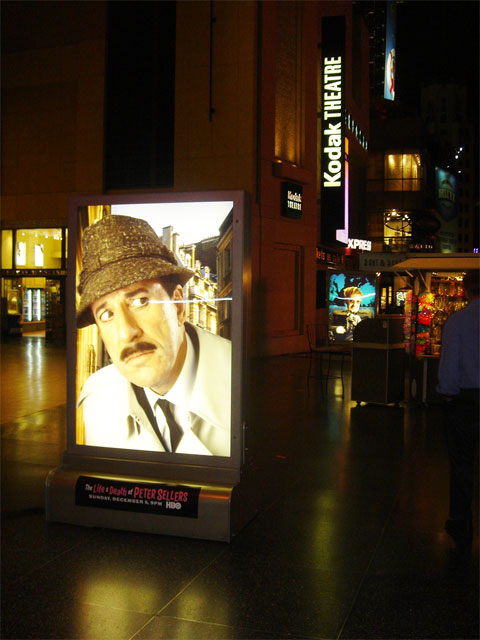
PRODUCT DISPLAY POINT
If you think your best strategy from the above chart should be to convey a positive perception of difference, then lightboxes adjacent to this zone containing photos of product features and/or product in use will be most effective.
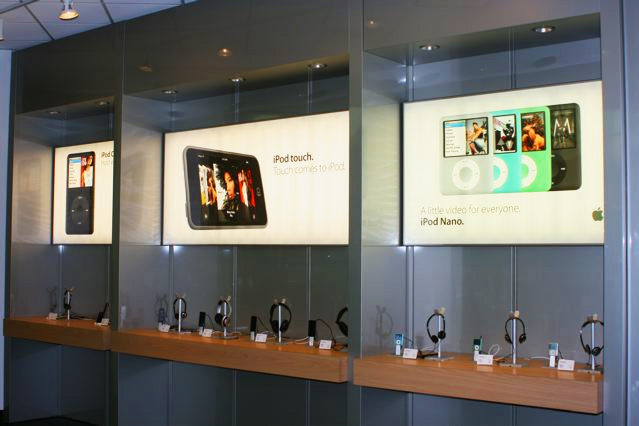
POINT OF PURCHASE
Lightboxes in the POP zone are best utilized for upgrade and cross-sell messages, because here you already have a committed customer and now’s your chance to add even more value to the transaction.
TRANSITION AND/OR NON-PRODUCT ZONES
Any part of the store that is not one of the above three zones is a great opportunity for backlit messages about promotions, value-adds and alternative products, departments, services and/or features of which the visitor might not already be aware.
Hopefully this summary of how best to deploy backlit lightboxes is a help to those who are planning a new retail store or remodel. At Blue River Digital, you can browse the world’s largest selection of lightboxes here, or for backlit lightboxes custom-built to spec, you may submit your request for custom quote here.







